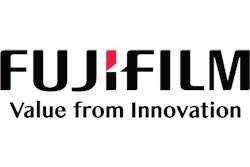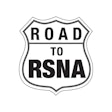Last year GE Medical Systems capped a long and arduous journey to win the first U.S. approval for a full-field digital mammography system, the Senographe 2000D. This year GE has a competitor: Fischer Imaging's SenoScan unit won the FDA's approval in September. Other vendors are still pounding the pavement, inching ever closer to regulatory approval for their works-in-progress.
Many issues remain to be resolved before FFDM can achieve widespread clinical use, however. Reimbursement rates must rise in the U.S., and the cost of the systems must also drop before they will become affordable for a large number of mammography facilities, many of which are already struggling under severe economic pressures.
And to the surprise of some, the clinical efficacy of the technology needs more testing. The U.S. National Cancer Institute launched a large-scale multicenter study in September to compare the performance of FFDM with that of film-screen mammography. The institute is giving $26.3 million to the American College of Radiology Imaging Network (ACRIN) to fund the research, which will include FFDM systems from GE, Fischer, Fuji, and Hologic’s Lorad division.
In October, controversy struck the entire breast imaging community when Danish researchers issued a report questioning the value of screening mammography. Although mammography advocates roundly criticized the report, it dealt a severe blow to mammography in the middle of National Breast Cancer Awareness Month.
Finally, computer-aided detection (CAD) continues to earn its share of mammography news headlines. New clinical studies continue to validate the technique as an adjunct for detecting suspicious areas on mammograms. This year's RSNA meeting will see some CAD firms showing systems on the cusp of commercialization, while others will exhibit for the first time.
Advanced Diagnostics
ADI of Preston, WA, will make its RSNA debut with what it calls a brand-new form of soft-tissue imaging technology -- breast imaging being just the first application.
The technology, called diffractive energy imaging (DEI), is based on ultrasound waves, but doesn’t collect echoes that are bounced back to a transducer. Instead, the system uses a detector on the other side of the area being imaged.
The resulting gray-scale images are dynamic -- collected in real time like ultrasound -- but have contrast and spatial resolution properties that are more akin to x-ray. The system resembles cross-sectional modalities in that several dozen slices are acquired.
In December 2000 ADI received FDA clearance for the unit as an adjunct to mammography, with non-breast applications expected to follow. The firm will also show a work-in-progress version of the device for use in breast biopsy applications.
The technology originated from work conducted in the 1970s at R&D firm Battelle Laboratories in Richland, WA, and ADI was founded to commercialize the technology. Shipments are expected to begin in the first quarter of 2002.
CADx Medical Systems
CADx of Laval, Quebec will highlight its Second Look CAD workstation, a stand-alone system that uses computer algorithms to identify suspicious areas on a mammogram.
Second Look has a continuous loading feature that can handle up to 50 films, according to the company. The unit analyzes digitized films and prints what the company calls a Mammagraph, with areas of interest highlighted.
Second Look can also analyze data directly gathered from a full-field digital mammography system and display the image on a monitor. The company has been selling the unit around the world, with the exception of the U.S., where Second Look is currently under review by the FDA.
The company will also present the work-in-progress Second Look AD, which will allow mammographers to analyze both analog and digital images with the same system. In the future, CADx also plans to explore the use of CAD technology with other imaging modalities, such as chest radiography.
Fischer Imaging
Fischer received clearance for its FFDM unit, SenoScan, in October of this year, and will highlight the unit’s features in its RSNA booth: SenoScan has a resolution of 50 microns and carries the potential for resolution of 25 microns, according to Al Palombo, vice president of corporate communication at the Denver company.
The unit also delivers less x-ray dose to patients due to Fischer’s slot-scanning technology, in which a CCD detector scans breast tissue 2 cm at a time, then reconstructs the image, Palombo said. In addition, SenoScan has a large enough field-of-view that all breast sizes can be accommodated without repositioning patients, according to the company.
Fischer has updated the unit’s design, increasing the curvature of the bucky so that compression is more evenly distributed across breast tissue. The company sold its first commercial-use SenoScan to New York Private Medical Imaging Facility in New York City, and has placed five of the units with ACRIN for the FFDM study that organization is conducting. SenoScan is also in clinical studies with Fischer partner CADx’s CAD technology, Second Look.
Fischer will also showcase MammoSound, a 10-MHz ultrasound probe guidance device that attaches to Fischer’s Mammotest breast biopsy table. Also highlighted will be Mammotest Elite, a high-resolution camera that uses a new scintillating material for CCD image acquisition.
Fujifilm Medical Systems USA
Fuji will be showing off its FCR 5000MA digital mammography system at this year’s RSNA show. The system features 50-micron resolution, and can be used with all imaging plate sizes, including 24 x 30-cm plates for mammography.
The product will also include the complete suite of Fuji image processing algorithms. In addition, as part of the system, Fuji will be demonstrating its CAD software tool and flat-panel display hardware.
FCR 5000MA is currently in clinical trials as part of the FDA approval process. The company anticipates that approval for marketing could be forthcoming in 2003. Although not yet available in the U.S., Fuji reports brisk sales of the system in Europe.
Next page:
Hologic through Sectra






